Learn English while learning about daily life in Australia, with Rob McCormack
Podcast Number 7 – Melbourne’s Tram System
Hi,
In my last podcast, I told you about Melbourne’s train system. That’s the best way to get to and from the suburbs of Melbourne. But when you are in the city centre, the electric Tram system is the best and most enjoyable way to get around. Melbourne’s trams add colour and are a part of the character of Melbourne. I love to hear the sound of a tram bell as a tram approaches a tram stop. I can still remember taking my two boys on their first tram ride when we came to live in Melbourne in 1994. They were so excited as young children to be riding on a tram through the streets of Melbourne. And so was I. I still enjoy a tram ride today, around 20 years later.
Melbourne’s tram system provides transport for the city centre and many suburbs close to the city. Actually, Melbourne’s tram system is the largest city tram network in the world. The network has 250 km of track, 487 trams, 30 different routes and 1,767 tram stops. Like the trains, trams are quite cheap to use and are great for students, shoppers, tourists, city workers and those who live in or near the city centre.
Melbourne’s trams also take very large numbers of people to and from the many sports and other special events here in Melbourne. For example, during the Australian Rules Football season and the cricket season, extra trams will run to carry many sports fans to and from the MCG and the Docklands Stadium. During events such as the Australian Tennis Open in January, the Australian Formula One race in March and the Melbourne Cup in November, extra trams will also be running in order to move the large numbers of people to and from the venues.
And it works very well too. Trams are great people movers.
One of the great things about trams is their colour. Many trams are painted in bright colours or covered with bright advertising. My favourite tram is the one painted with pictures of Rhinos. Rhinos are a very heavy African animal. Trams are big and heavy too.
This tram is giving the message that one tram weighs as much as 30 Rhinos. Car drivers need to take care that they don’t collide with a tram. Trams are not to be argued with on the road!
A popular tram in Melbourne is the City Circle tram. This is free and operates just within the city centre.
It goes in a circular route around the city centre passing major tourist attractions and shops. You can hop on and hop off these trams during the day as you explore the city. City Circle Trams run in both directions around the route and come every twelve minutes or so, between 10am and 6pm from Sunday to Wednesday and from 10am to 9pm from Thursday to Saturday. These trams are heritage W class and are painted maroon. You should try these when in Melbourne.
Riding a tram is easy. You will need to buy a Myki card (just $6 at retail stores and railway stations) and ‘touch on’ when you get on the tram, then ‘touch off’ as you get off. It’s that easy.
Have fun on Melbourne’s trams.
If you have a question or a comment to make, please leave it by clicking the comments link at the top of this story. You can leave your comment in English or in any language and I will translate it. Or, you can send me an email at rob@slowenglish.info. I would like to hear any suggestions you may have. I would especially like your suggestions for podcast topics. Goodbye until next time.
Rob
Podcast 7 Quiz - Did you understand the podcast?
You can take the quiz as many times as you like.
Vocabulary
advertising = signs which say you should buy something. For example, buy Coca Cola
African = when something comes from Africa. For example, a lion comes from Africa
approaches = when something is getting closer
argued = when 2 people don’t agree
attractions = places which people like to go to see. For example, the Great Wall of China
bell = something that makes a ringing sound
character = the things about Melbourne that we like
cheap = a small cost
circular = something that is round. For example, a tennis ball is round
collide = when 2 things hit one another
colour = red is a colour. Other colours are blue, green and yellow. The sky is blue.
different = when something is not the same
direction = the way to get to a place
Docklands Stadium = a place in Melbourne where they play sports
enjoyable = when you like something. It makes you happy
explore = when you go to different places to see what is there
extra = some more
heavy = when something is hard to lift up
heritage = very old
maroon = a colour
message = when someone tells you something, it is called a message
painted = when something is covered in colour
popular = when something is liked by lots of people
provides = gives
quite = part of, up to a certain amount
remember = when you can recall something from the past
retail stores = places where you can buy things. Also called a shop.
routes = a way to get somewhere. The way that a tram goes
shoppers = people who buys things in shops
students = people who go to university or high school
tourists = people who have come to Australia for a holiday, to see Australia
transport = a way of getting around. For example, trains, trams, cars, bicycles, motorcycles, etc
venues = a place where sport is played
weighs = when you say how heavy something is. For example, a tram weighs a lot

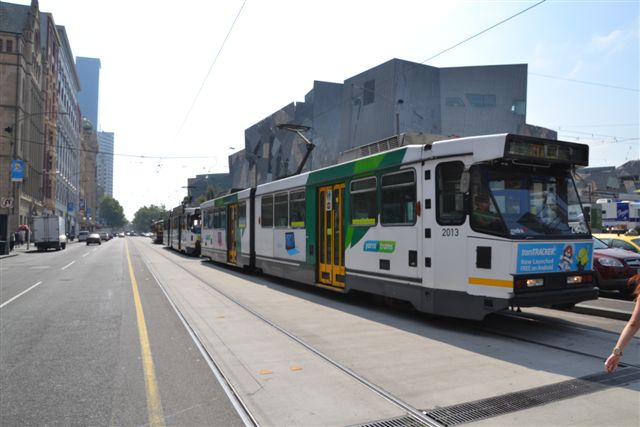
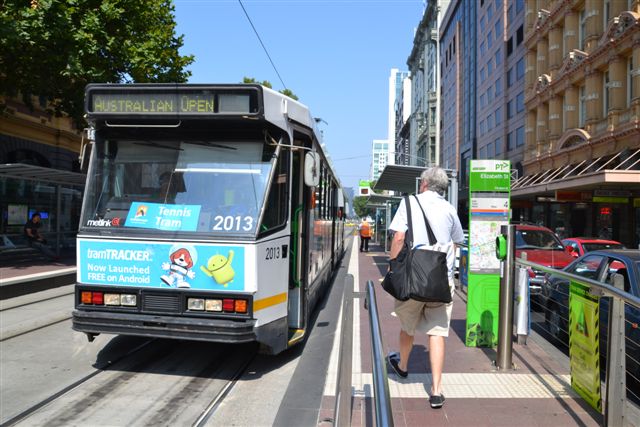
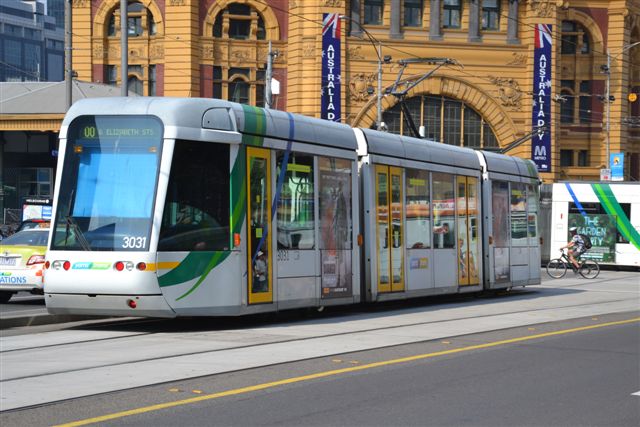
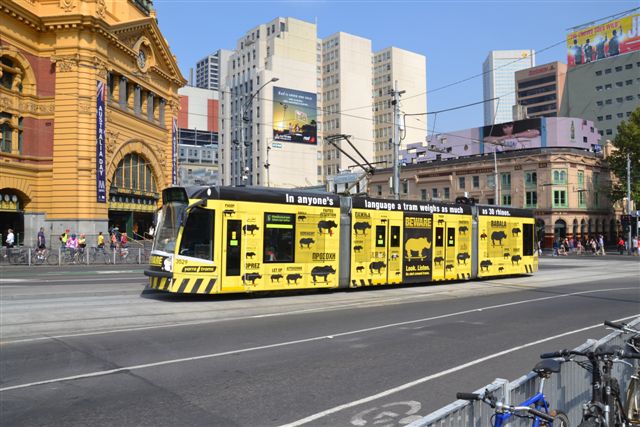
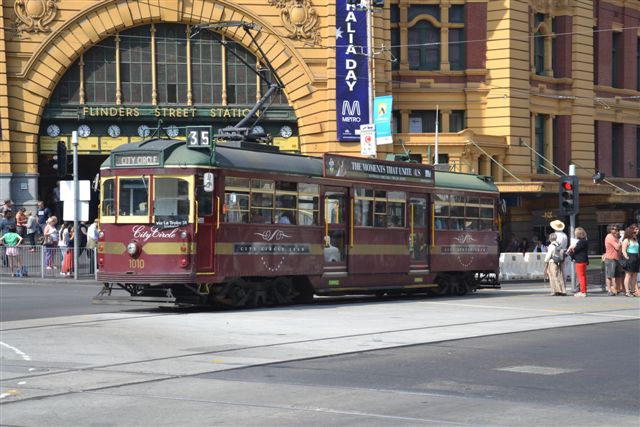
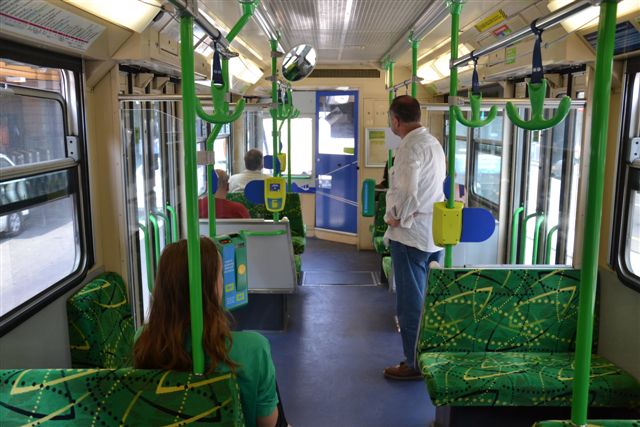
November 14, 2025 at 11:14 am
Sir, thank you — great job!
If you get the chance and feel like it, please tell us about immigrants in Australia and how local people view them.
November 14, 2025 at 1:51 pm
Hi Yaghoub,
Many thanks for your comment. You might care to try Podcast 60, Multicultural Australia which talks about migrants in Australia.
Best regards,
Rob
May 18, 2025 at 12:23 am
Hello, Thanks for this texte. In France, you validate a train or streetcar ticket but you don’t revalidate it at the end of the journey.
May 18, 2025 at 8:40 am
Hi,
Thanks for your comment. Yes, an interesting difference. The Myki must be validated again at the end of the journey, so that the system knows how long the journey was, and therefore how much to deduct from the balance on the card. I assume the French system has a different way of calculating the fare.
Best regards,
Rob.
July 26, 2023 at 7:54 pm
Thanks Rob! I am from China, I learn English every day, this the Slow English is very good and suit me.
July 27, 2023 at 11:41 am
Hi Lilua,
Many thanks for your comment. I am pleased that you like my podcast.
Have fun learning English.
Best regards,
Rob.
August 14, 2018 at 4:10 pm
G’day, Rob
It’s been a week since listening to your podcasts. I’ve only visited Sydney but your podcast really makes me want to visit Melbourne one day as well. In Sydney, I had to use the ‘opal card’ for any transportations but here it’s Myki ! Interesting.
I wonder if I can ask you about some grammar here. (If it bothers you, just skip this question :p) It’s about article. In this podcast, there was a sentence like :
…the city centre passing major tourist attractions and shops
I thought adding ‘the’ before major sounds natural as well. The presence of ‘the’ is not important here? I really don’t get when it’s allowed to omit articles.
The contents are really enjoyable, cheers.
Eunhye
August 14, 2018 at 5:21 pm
Hi Eunhye,
Many thanks for your comment and your kind words. That is a great question you have asked about the article. The sentence you refer to is – ‘It goes in a circular route around the city centre passing major tourist attractions and shops.‘ You have asked if there could be a ‘the‘ before the word ‘major‘. If I had put that word in at that spot, then it would imply that the tram passes ALL the major tourist attractions and shops of Melbourne. In fact, the tram passes some, but not all. By leaving the word ‘the‘ out of the sentence, I am inferring that there are some tourist attractions and shops which the tram doesn’t pass by.
I hope that explanation is useful. That was a great question and shows that you are really understanding English very well. Nice work!
Cheers,
Rob
August 15, 2018 at 12:43 pm
Many thanks for your quick and detailed explanation, Rob. So what you mean is that the sentence without ‘the’ implies the tram may not pass by some attractions. Actually, what I expected at first was it passes ALL stations as leaving ‘the’ out of the sentence because for me, No article sounds signifying something general. And I also expected you could point some specific attractions where the tram doesn’t pass by as putting ‘the’. But it was totally opposite! It’s fun getting to know this kind of delicate thing. Thank you so much again.
June 23, 2015 at 4:33 am
Ho Rob
I’ve found tour site fortunally. I’m learnig a lot of English language and Australia too.
Thank You very much.
Greetings from Italy
June 23, 2015 at 9:02 am
Hi Francesco,
Many thanks for your message. I’m pleased that you find my website useful.
Your English seems very good, so well done. Learning a language is not easy.
Have a great day.
Rob
January 6, 2014 at 9:07 am
What a pity that is not to see youngers on the pictures which are providing to get any idea about people who live in Melbourne. I think there are very large numbers of older people in population of Melbourne. It’s just a guess. I can make a mistake while I comment or say something about pictures. That is fascinating topic to learn daily life in Melbourne and get idea without go over there. Its mean not clear which is “to and from” that have used 4 times in different sentences by yourself. Is its mean same (single) or changing depends on to explain any case (sitiation). Thanks for everything. Peace out.
January 6, 2014 at 9:35 am
Hi Eagerbeaver,
Thanks for your comment. We have lots of young people in Melbourne, like any big city. Our population is growing so you will find lots of children, teenagers and young adults in Melbourne. I took my pictures in the centre of Melbourne on a normal working day, so you would expect there to be fewer younger people in the city on that day.
The term ‘to and from’ means that the trams carry people to their destination, and also back again. For example, they may catch a tram to the Victoria Markets, then they catch a tram back home again (from). I hope that explanation helps.
Have a great day.
Rob
February 5, 2013 at 7:48 am
Hi
A most interesting site.
December 11, 2013 at 8:51 am
Thanks Silvia.